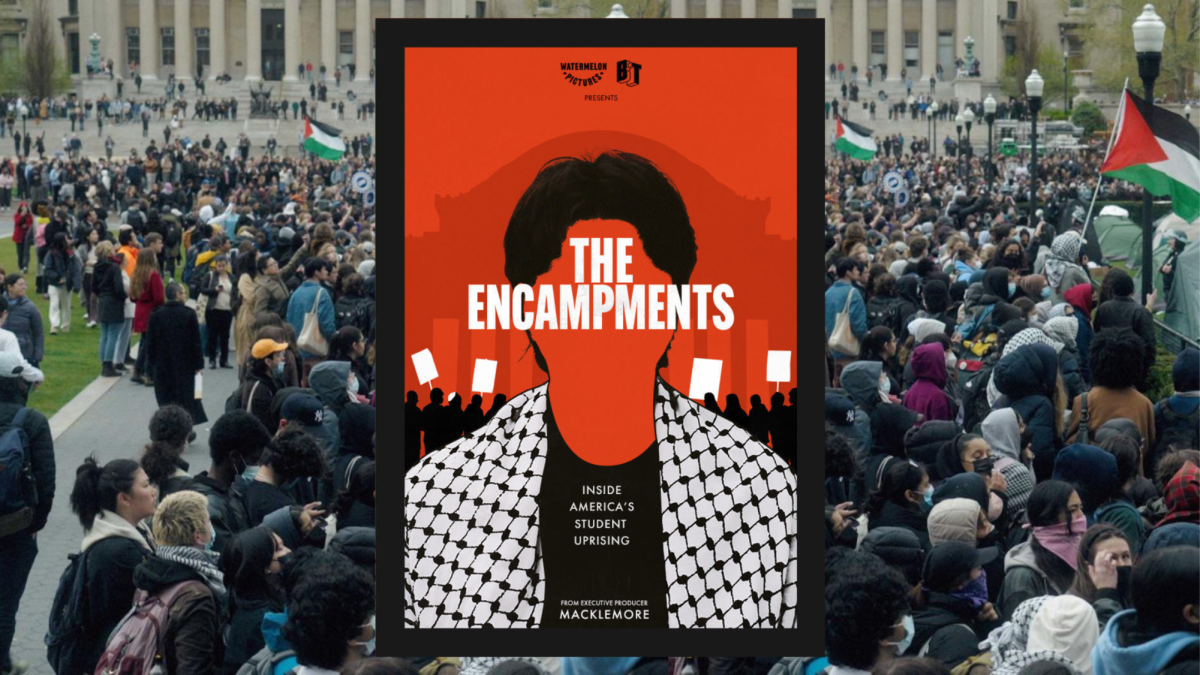In “The Encampments”, directors Kei Pritsker and Michael T. Workman assembled a clear portrait of a student movement that was both criticized and misunderstood. Chronicling the 2024 Gaza Solidarity Encampments at Columbia University and its effects across campuses worldwide, the documentary gives the viewer more than a historical record. It becomes a study on how the movement began, how they were perceived, and how institutions responded when young people refuse to be silent.
Executive produced by Macklemore and released earlier than planned following the arrest of student protesters nationwide, including the arrest of Palestinian student organizer Mahmoud Khalil, “The Encampments” wasted no time in establishing its dual mission, to document and to challenge. Opening with a montage of national media voices condemning the encampments, the film immediately positions itself against dominant narratives that framed the protest as antisemitic and extremist. Yet what follows inside the tent cities is something that was far more difficult to distort, students singing, studying, debating, and building a community with a shared political commitment.
Rather than following the events from a distance, Pritsker and Workman embed themselves in the movement. They focused on four central figures, Khalil, Sueda Polat, Grant Miner, and Naye Idriss, this allowed their experiences to drive the narrative. This made the film feel more intimate and deliberate, the directors leave pauses in conversations intact, creating moments where silence is able to speak as forcefully as any testimony.
The film captures the emotion behind activism, the exhaustion, the hope and the sense of making history. Archival footage of Columbia’s 1968 antiwar protests provides necessary context, drawing a direct line between generations of students willing to put their futures on the line for political convictions. In one of the film’s most powerful sequences, audio of six-year-old Hind Rajab’s final call for help plays over a blank screen, offering a jarring reminder of the stakes that drive protest beyond the ivy gates.
I will note that opposing views appear mostly through media soundbites, while university administrators are largely absent except through archival footage and press conferences.
In the second half of the film, we see footage of police raids on Columbia’s Hamilton Hall and other campuses, complete with military-grade gear and tactics, which makes clear that peaceful demonstration has once again been met with disproportionate force. Watching university administrations invoke “safety” and “order” as justifications for violence feels depressingly familiar, a pattern that as recent events show continues today.
“The Encampments” ends on an unresolved note, reflecting the unfinished nature of the story. Text cards inform viewers of Khalil’s arrest, Miner’s expulsion, and the wider pattern of discipline against student protesters. The film offers a subtle argument: that movements do not die with repression; they are often reignited by it.
At a moment when protest is increasingly criminalized and corporate influence weighs heavily on academic institutions, the film reminds us that history is often shaped not by those in power, but by those willing to resist it.
For more information visit Watermelon Pictures


